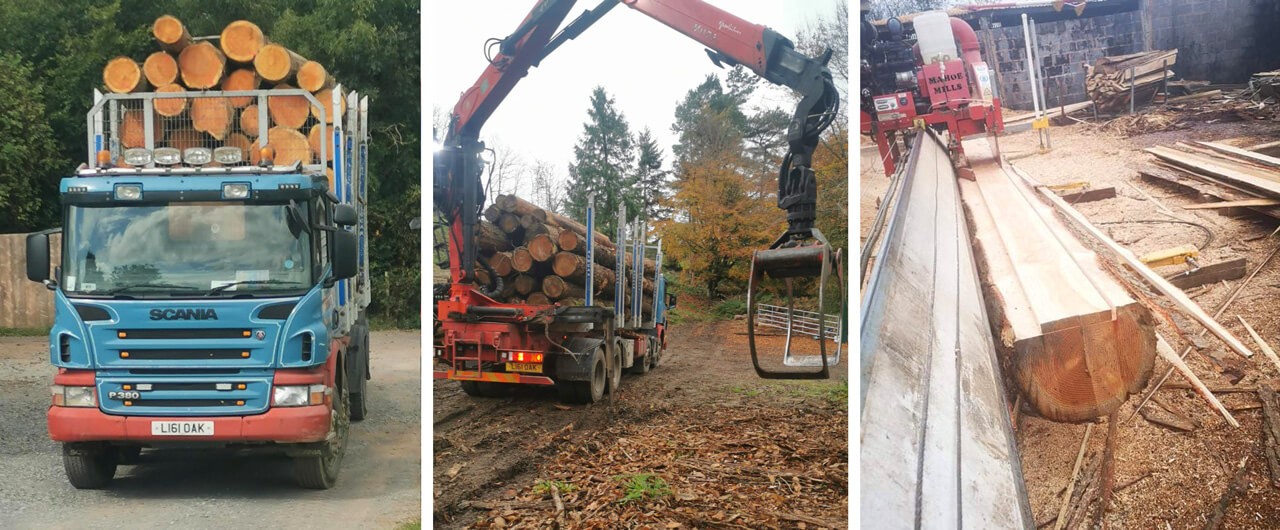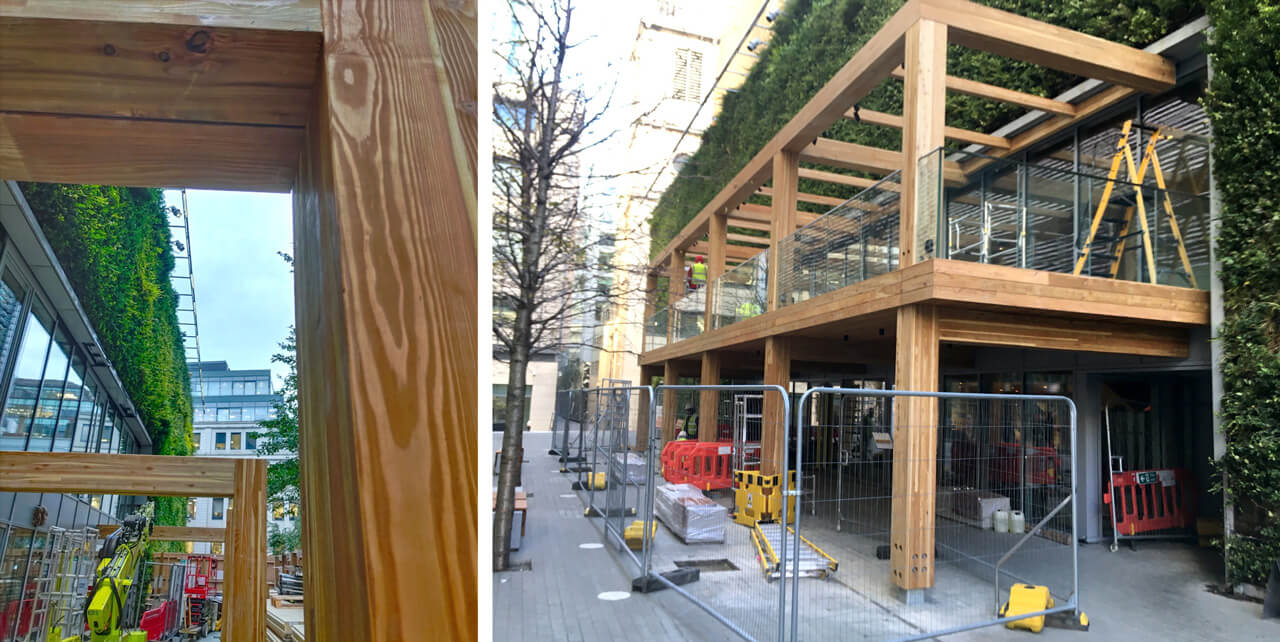From Seed To City; Locally Grown Glulam Projects
BACK TO BLOG MAIN PAGE
To create our glulam beams, Buckland timber use locally grown wood as much as possible.
As the company has grown and gained more and more prominent customers, we have found sustainability of the project can be a major deciding factor in what materials to use and how the project comes to life.
We were approached by Structure Tone about a new project in the centre of London. The project brief was to create a double-storey terrace integrated into an existing building, creating a new entrance feature as part of a renovation project.
The ‘Walkie Talkie’ building included planning permission for a garden at the top, and with the area now attracting quite a large number of visitors who want to take in the views from this iconic building, the project’s objective was to make a dedicated new space that complemented the Sky Garden Lounge’s visitor experience and reinforce their customer’s focus on health and wellbeing.
As part of this brief, one of the key requirements was to use locally sourced materials and our locally grown timber offered the opportunity to reduce carbon emissions from transportation, ensure the materials came from a sustainable source, and support UK-based businesses.
Buckland used larch glulam for the majority of the structure, which was grown in Somerset at Cricket St Thomas. The trees are felled and then collected by Tom at Devon Oak, around five miles down the road, where he saws the timber and then sends them along to Tom at UK Hardwoods, where they are kilned for a couple of weeks to dry out.
The wood is dried out to a 12% moisture content, to enable us to work with it, and then Tom brings the wood to Buckland to undergo the process of being turned into the glulam beams that make up the structure.

Once the timber arrives it is structurally graded, which means it is checked to make sure it achieves a certain strength; knots and other defects can affect the integrity of the wood. These are removed as part of the finger joining process and the wood is glued and clamped. Once the beams are cured they are planed up to create a smoother surface and begin to look like the beams you will see should you visit.
All of this process takes place within a 40-mile radius in the south of the country and when every beam is complete, joints and fixings are ready, it is transported to the site ready to be erected.
The great thing about using locally grown timber for this project is that not only did it enable the client to keep their carbon emissions in check during the sourcing and transportation of the materials, the wood was also treated with a SiOO:X finish, which prematurely predictably ages the timber and helps keep the maintenance of the structure minimal. The material and finish ensure the structure retains its look and feel over a longer time period.
Eventually, should the structure be replaced, the client can either use some of the elements in a different location, or the timber can be re-sawn and reprocessed into something else such as new glulam beams or other timber projects.
A beautiful, sustainable choice for a project that also just happens to work in perfect synergy alongside one of London’s largest green walls.
